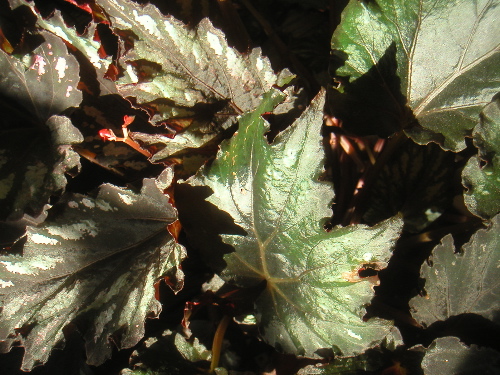
I'm old enough to have been able easily to maintain, like most of my contemporaries, an indifference to the Victorian aesthetic at best, and usually a strong abhorence even of the charms and beauties fashion now allows most of us to accept so easily. One of my old prejudices was against what I thought of as fussy hothouse or parlor plants. They seemed entirely alien to clean modernism or even European classical art and architecture. They were thus to be automatically avoided, along with the gaudy glazed pots in which they were set, many of which are of course now virtually priceless.
The image above is a of a Rex Begonia, and it's there because I've finally surrendered, in frustration and ultimately in affection.
The total shade of the environment on which the small roof garden outside our apartment windows must depend doesn't seem to encourage most local plant species, so I have begun to depend instead upon the resourcefulness of generations of Victorian gardners.
One of this year's summer guests, welcomed only reluctantly, was this gorgeous Begonia, which seems to have thrived while hanging from our high breakfast room air conditioner. Until a few days ago I had expected I'd have to discard it with the first frost. In a last minute reprieve I can't really account for, the plant was removed from its hanging apparatus and set into an Art Déco porcelain cache pot. It now adorns our not-quite-Victorian parlor, where this intimate portrait was completed this afternoon.
Perhaps one of the arguments in the favor of its survival, if not of its acquisition in the first place (from the Union Square greenmarket, natch), was its subspecies name, "Rex". I think of my fabulous friend Rex Wasserman every time I look at the exotic thing. Were he around today however, even Rex himself would admit that the plant is easier to live with.
But not such damn good company.